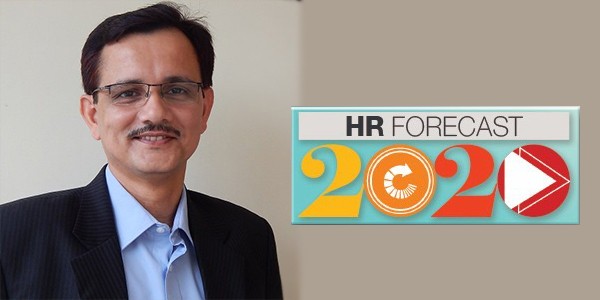Technology, data, employee experience: What’s high on agenda
I would consider employee experience as high on the agenda, and technology and data will just be the enablers. If organisations are unable to create a highly engaging workplace and experience for employees, they will find it challenging to retain talent. The gig workers look for overall experience rather than just any job, as they have plenty of choices.
The last couple of years have seen quite a hype around artificial intelligence (AI) and machine learning (ML) and their application in the HR function. I sense the same will continue in 2020. Although there has been quite a bit of noise and tall claims around these areas, real disproportionate benefit to organisations using these tools are not seen yet. Organisations are investing and trying out these areas and they will continue to do so in 2020 too, till an equilibrium sets in to determine what really is creating a good experience for employees.
Personally, I feel application of technology in enabling learning and development will be the focus in 2020. Traditional chalk board and classroom training will no more interest the millennials, and will gradually fade away to a minimum requirement. If we can use AI, augmented reality (AR) and virtual reality (VR) tools to create simulated scenarios for continuous useful learning interventions, the employee experience will be awesome and it will enable the workforce to get continuously reskilled and remain employable.
The biggest challenge for HR in your sector
Pharma as a sector has been relatively insulated from economic uncertainties and turmoil. Nevertheless, pricing regulations, stringent regulatory and quality norms, especially for the US and other markets, leading to increased costs, consolidation of buyers in large markets, such as the US, e-pharmacies, fierce competition, thrust on genericisation in India, and stricter marketing guidelines have forced all companies to tighten their belt in all respects. Arising out of these realities of business, general socio-economic trends will continue to create the following HR challenges:
Rising employee cost and the need to ensure high employee productivity will lead to the cutting down of flab. The focus will be on better organisation structure, design and ensuring highest return on deployment.
Reskilling of the workforce, particularly in manufacturing, to ensure they are in tune with constant changes in technology and quality norms. Focussing on innovative methods of learning to keep the workforce energised and relevant will be a challenge.
Attraction and retention of talent at all levels will be the priority to ensure minimum disruption of business. At the same time, organisations will need to face the realities of a gig economy and tune their workplace to be more adaptive to short tenures, even while maximising returns.
Time to say goodbye to a few age-old HR practices
In my personal view, we should look at eliminating the concept of probationary period/ training period for new hires. These clauses hardly give any returns and in turn create more work and dissatisfaction internally, without any material benefit. If one has a stringent recruitment norm, this add-on clause will really not help.
A more disruptive drop idea (quite contrary to HR belief) will be eliminating the entire annual employee appraisal practice altogether. Good role clarity, periodic priority check-ins for employees, and continuous feedback from managers with a provision to document non-performance issues should suffice. The rigmarole of setting annual KRAs, mid-year reviews, annual reviews, ratings and continuous follow up with managers and employees to complete the same without any real benefit to organisation performance or non-performance process should be dispensed with.
Role of analyst in HR
HR will have to upgrade their skills to analyse all sorts of information and data pertaining to business and its implication on human resources. Interpreting business numbers and correlating with various types of employee data, such as productivity, costs, employee demography and understanding the right interplay will be useful to take more proactive decisions that drive business. This will help HR to better advise business leaders on people trends and insights that can impact business either ways and vice-versa.
Rising employee benefits cost
Rising employee benefits costs will always be a reality and challenge. Also, given the fact that most sectors are going through pricing pressures, the employee costs cannot be overlooked. However, what is important to understand is how to make the employee cost productive and yield benefit for the organisation. Optimum sizing, cutting down on unnecessary flabs yet having best-in-class talent can disproportionally jack up productivity and thus result in healthy payback. Therefore, employee benefits cost cannot be termed as a challenge today if channelised in the right manner, using proper tools for assessing and assigning benefits, based on the contributions made by the individuals. It is also proved through many surveys and experiments that employee engagement is directly proportional to higher productivity, and can positively impact the bottom line of any business.
Data deluge: More power to HR
Yes, there is a data and information deluge and it is growing every day. Decision-making in people processes cannot be entirely binary and data driven. Of course, data and information will help us pick a better option but it cannot be predicted with certainty as the best choice always. What will be important is to assimilate the vast pool of data around us, and from there determine how to derive clarity, and apply human sensing to take more data-driven gut-feel decisions.
(This article first appeared in HRKatha)



